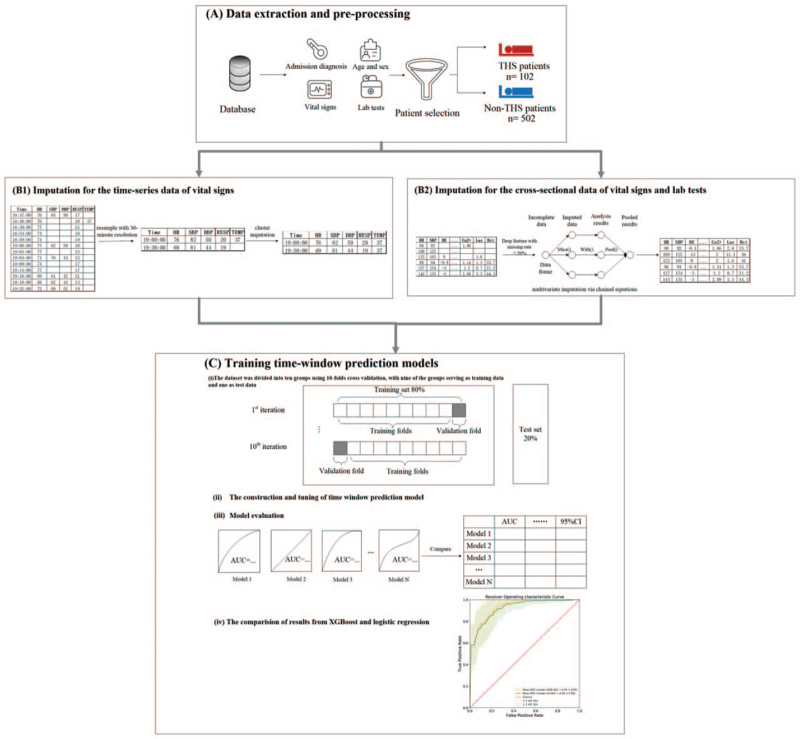Fig. 1.
Model development overview. (A) Data extraction and processing. Data including admission diagnosis, demographic information (e.g., age and sex), vital signs, and laboratory results were extracted from PLAGH-ERD. Patients were divided into THS and non-THS groups. (B1) Imputation for the time-series data of vital signs based on cluster. (B2) Imputation for the time-series data of vital signs based on multivariate imputation via chained equations. Features with missing rates greater than 50% were removed. (C) Feature importance was calculated based on the average gain of XGBoost to analyze the relationship between the features and THS. (D) Training time-window prediction models. (i) The data set was divided into 10 groups using 10-fold cross-validation, with nine of the groups serving as training data and one as test data. (ii) The construction and tuning of time-window prediction. (iii) Evaluation. The AUROC, AUPRC, F1.5, precision, recall, accuracy, and 95% confidence interval (CI) values were utilized to evaluate the performance of each model for different stepped feature sets and time windows. (iv) Comparison of results from XGBoost and logistic regression. AUPRC, area under the precision-recall curve; AUROC, area under the receiver operating characteristic curve; THS, traumatic hemorrhagic shock; XGBoost, extreme gradient boosting.

